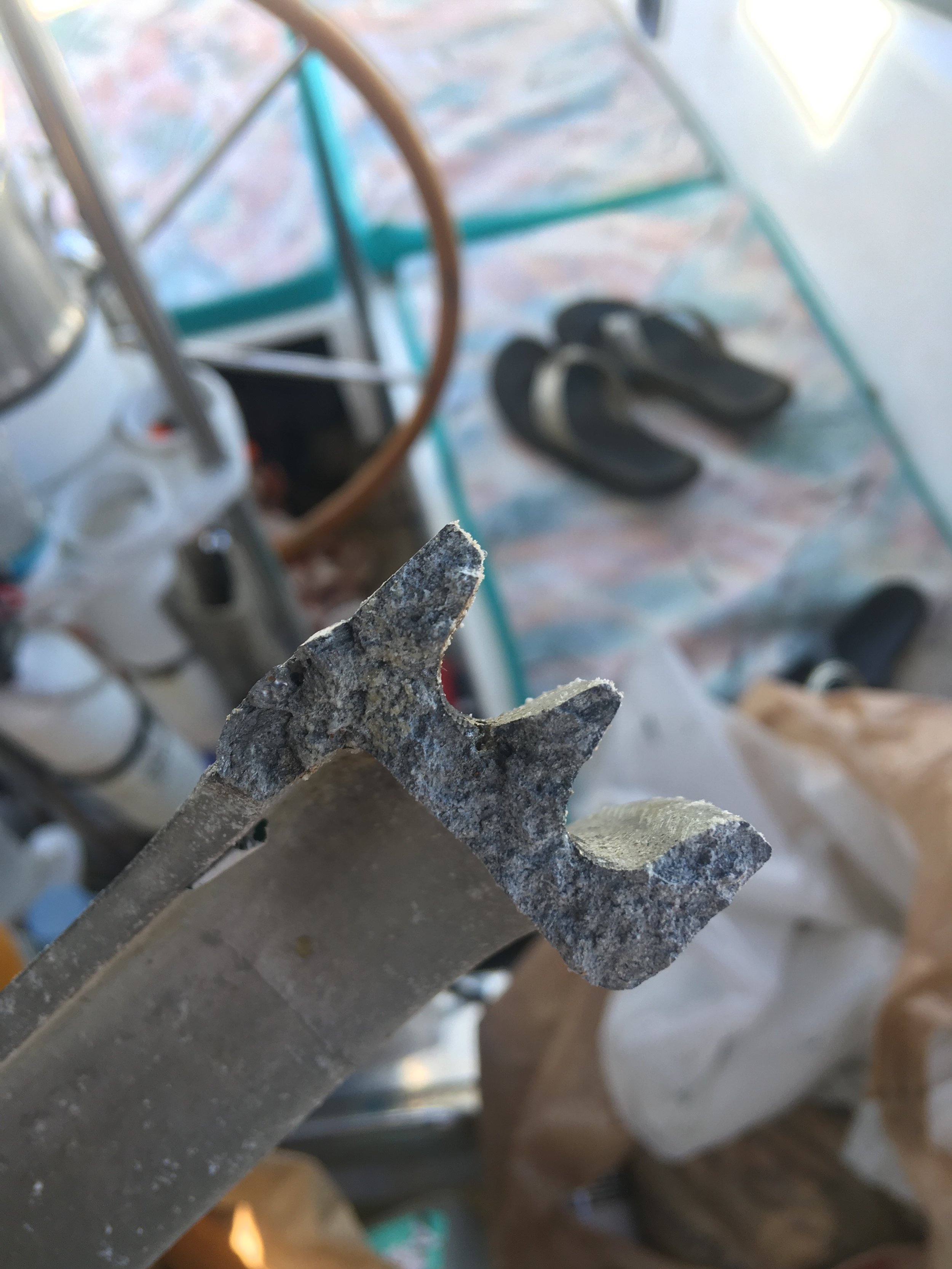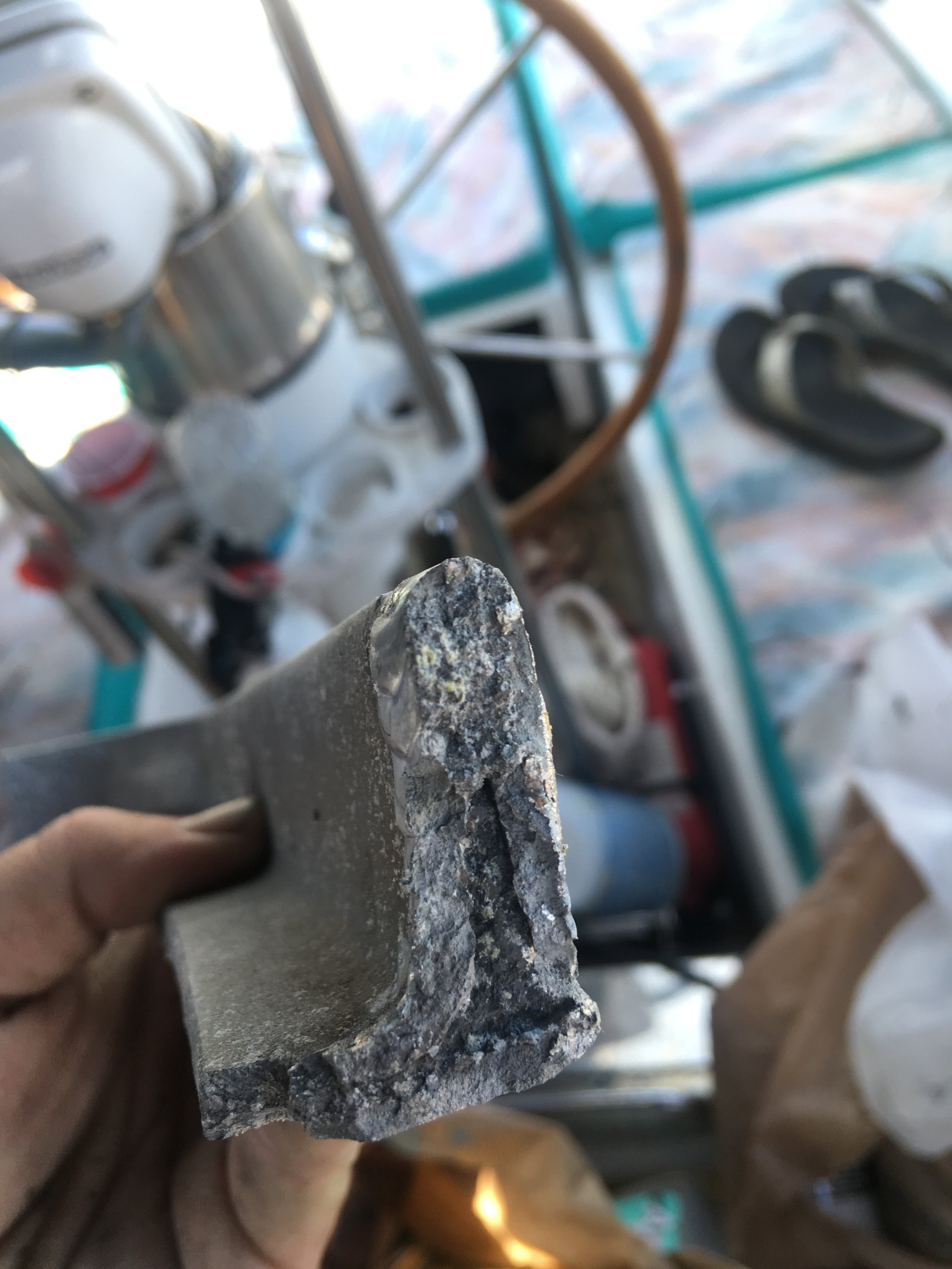Steering is a very important part of a yacht. Without it, your boat becomes a shelter! In the spirit of having spares aboard, the question comes up about keeping our old quadrant as a spare?
We had it welded once, and it shattered, so now we are replacing it with a bronze unit from Edson. Should we have it repaired again and keep it as a spare should anything happen to the bronze quadrant?
The reason we switched materials to bronze is because bronze will bend before it will shatter, so the hit that craked our old quadrant would probably only severely bend the new one.
The aluminum of the old quadrant is also made of large crystaline structures, which are weaker than a metal made of smaller crystals. So far, the aluminum quadrant has two strikes against it!
Upon repairing the quadrant, we would have a weak spare, as a backup to our strong primary system. This is fine as its purpose would be to get us to shore to carry out repairs. But carrying this spare becomes an issue! Rudder quadrants are rather large in our situation, and our space is very limited. Having a spare means storing and carrying a spare!
So we could pay money to fix a weakened and corroded unit that will then be a burden to store, to act as a spare for our new and very strong primary system. The logic should be pouring in at this point.
If we lose our quadrant, we do have an alternative option, which is to install our emergency tiller! This means that if we have a steering issue, we can simply pop the pipe onto the rudder post and steer away! Installing a tiller is much easier than swapping a quadrant, and it is much easier to store as well!
We decided to save the money for the repair and instead throw out the broken quadrant. The boat has sailed many a mile with no spare rudder quadrant, and the only times the quadrant has ever broken have been while under tow!
If you have a broken part that you replace with an upgraded version, consider leaving the old one behind instead of carrying it along with you as you cruise.












